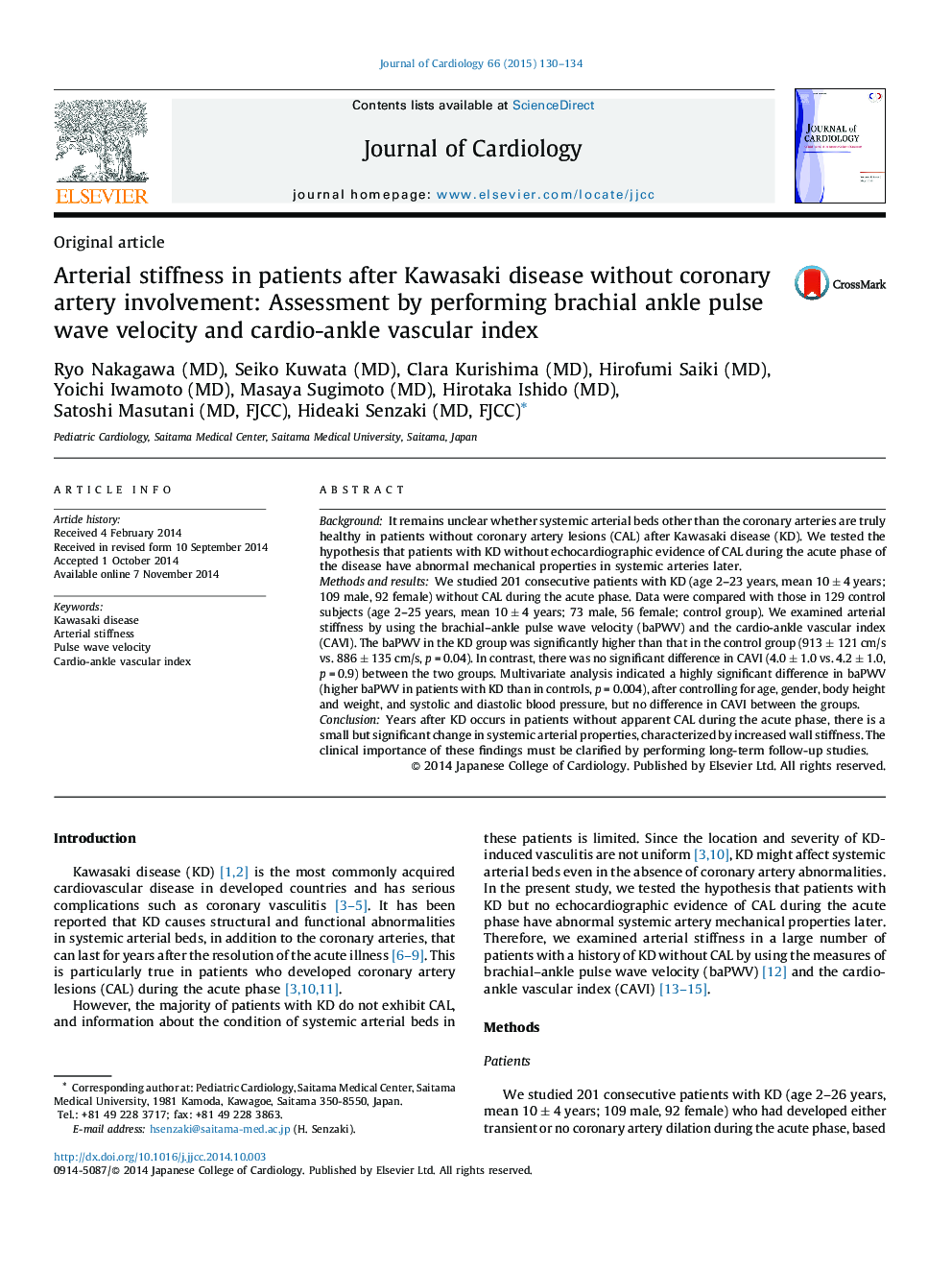| Article ID | Journal | Published Year | Pages | File Type |
|---|---|---|---|---|
| 2962944 | Journal of Cardiology | 2015 | 5 Pages |
BackgroundIt remains unclear whether systemic arterial beds other than the coronary arteries are truly healthy in patients without coronary artery lesions (CAL) after Kawasaki disease (KD). We tested the hypothesis that patients with KD without echocardiographic evidence of CAL during the acute phase of the disease have abnormal mechanical properties in systemic arteries later.Methods and resultsWe studied 201 consecutive patients with KD (age 2–23 years, mean 10 ± 4 years; 109 male, 92 female) without CAL during the acute phase. Data were compared with those in 129 control subjects (age 2–25 years, mean 10 ± 4 years; 73 male, 56 female; control group). We examined arterial stiffness by using the brachial–ankle pulse wave velocity (baPWV) and the cardio-ankle vascular index (CAVI). The baPWV in the KD group was significantly higher than that in the control group (913 ± 121 cm/s vs. 886 ± 135 cm/s, p = 0.04). In contrast, there was no significant difference in CAVI (4.0 ± 1.0 vs. 4.2 ± 1.0, p = 0.9) between the two groups. Multivariate analysis indicated a highly significant difference in baPWV (higher baPWV in patients with KD than in controls, p = 0.004), after controlling for age, gender, body height and weight, and systolic and diastolic blood pressure, but no difference in CAVI between the groups.ConclusionYears after KD occurs in patients without apparent CAL during the acute phase, there is a small but significant change in systemic arterial properties, characterized by increased wall stiffness. The clinical importance of these findings must be clarified by performing long-term follow-up studies.
